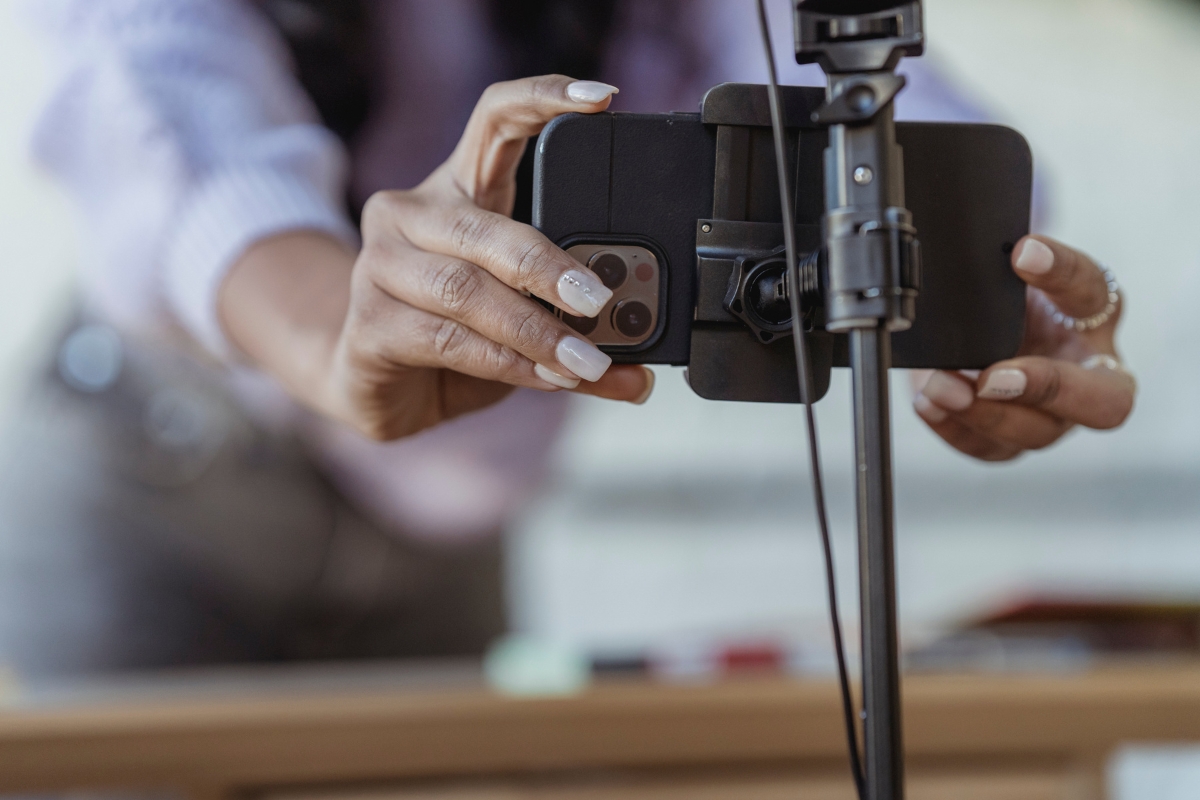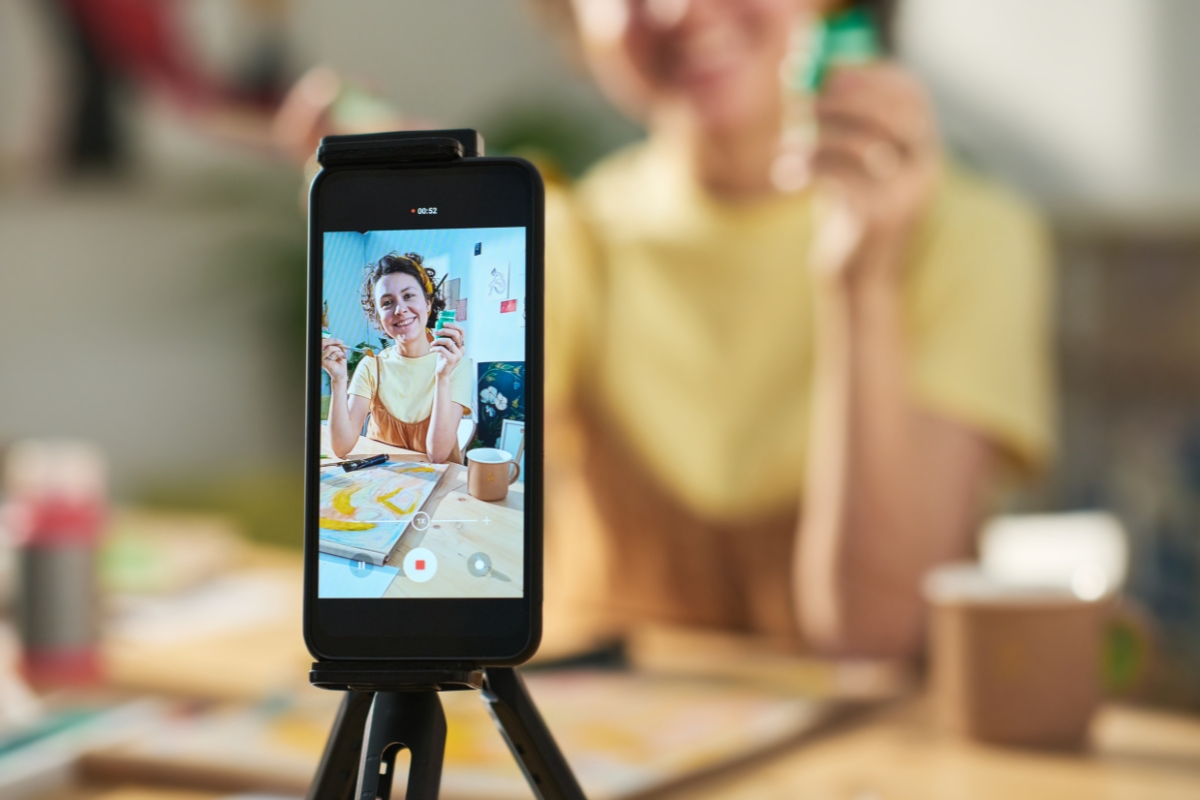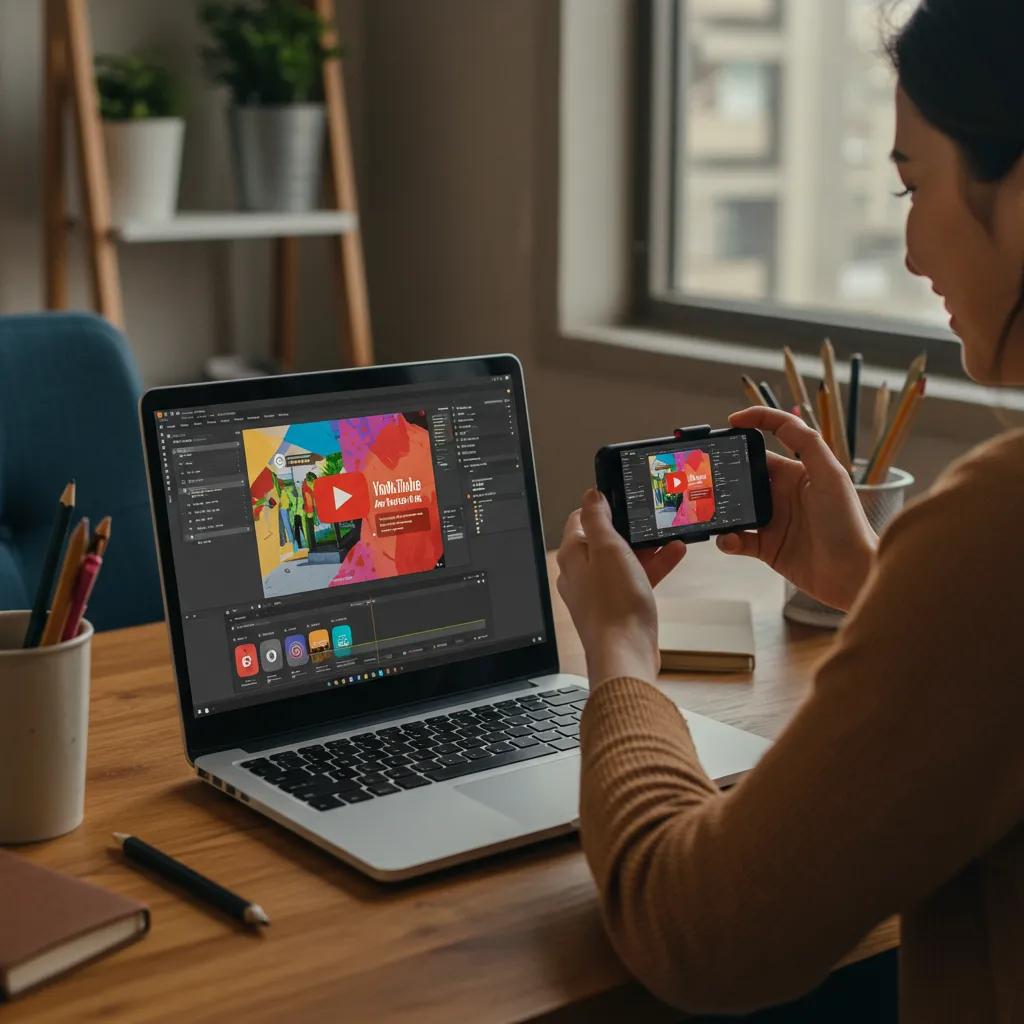Live streaming has revolutionized the way brands, creators, and businesses connect with their audiences. By offering real-time interaction, it creates a sense of immediacy and authenticity that traditional content simply can’t match. Whether you’re hosting a product launch, a behind-the-scenes look, or a live Q&A, live streaming allows you to build trust, answer questions on the spot, and foster stronger relationships with your viewers. In today’s digital landscape, going live isn’t just a trend—it’s a strategic move to boost engagement, expand your reach, and keep your audience coming back for more.
Live Streaming: The Ultimate Tool for Real-Time Connection
The Rise of Live Streaming in Digital Engagement

Over the past few years, live streaming has evolved from a niche technology reserved for gamers and tech enthusiasts into a mainstream method of digital engagement embraced by brands, educators, and media personalities. This transformation is driven by the increasing accessibility of high-speed internet and affordable streaming tools, which have lowered the barrier to entry for anyone looking to broadcast in real time.
Consumers today crave authenticity, and nothing beats the spontaneous, unedited quality of a live stream to reinforce trust and foster a sense of inclusivity. By interacting directly with viewers, creators can respond to comments, answer questions, and adjust the flow of content based on audience feedback, setting live streaming apart from static, pre-recorded videos.
Market research indicates that live-streamed content retains viewers for longer periods compared to on-demand video, translating into higher engagement rates and deeper brand loyalty. Platforms like YouTube Live, Facebook Live, Twitch, and Instagram Live have all capitalized on this trend by adding interactive features such as real-time polls, chat functions, and virtual gifts.
As a result, industries ranging from e-commerce and education to entertainment and corporate communications are integrating live streaming into their digital strategies. The rise of live streaming in digital engagement is not just a fad—it’s a shift in how audiences expect to consume content, demanding transparency, immediacy, and a direct line of communication with the brands and creators they follow.
Why Real-Time Audience Interaction Matters

One of the biggest advantages of live streaming is the chance to interact with your audience as things happen. This kind of direct communication changes the viewer’s role from passive observer to active participant. Whether it’s answering questions in a live chat, running a quick poll, or reacting to comments on screen, the back-and-forth nature of live streaming makes people feel involved and appreciated.
When viewers feel seen and heard, they tend to stick around longer. This leads to better results for streamers or brands—higher watch times, more loyal viewers, and a stronger sense of community. People aren’t just watching content; they’re part of it. That connection can make your stream more memorable and help build a returning audience.
Live interaction also gives you valuable feedback in real time. If you’re hosting a Q&A, giving a product demo, or streaming an event, you can adjust on the spot based on what your audience is saying. Maybe they’re confused about a topic, want more detail on a certain feature, or are really enjoying a particular segment. Instead of guessing, you get clear signals from your viewers as the stream unfolds.
This kind of transparency builds trust. When people see that you’re not just delivering a scripted message but are willing to answer questions or adapt to their interests, it makes your content feel more genuine. That sense of authenticity is hard to fake, and it goes a long way in building a loyal following.
Interactive live streams also tend to perform better on platforms that reward engagement. When viewers like, comment, and share in real time, it boosts your visibility and reach. And those spontaneous, unscripted moments—whether funny, emotional, or surprising—are often what keep people coming back.
In the end, real-time interaction isn’t just a nice extra feature of live streaming. It’s what makes the format stand out. By opening the door to two-way communication, you create a more engaging, responsive, and human experience that helps you build stronger connections with your audience.
Best Types of Content for Live Streaming

Live streaming works best when the content feels immediate, interactive, and real. Some formats naturally fit this medium better than others, especially when they take advantage of the chance to connect with viewers in the moment.
Product demos are a strong choice. Watching someone use a product live gives potential buyers a better sense of how it works, and they can ask questions on the spot. It’s also a great way to highlight features that might not come through clearly in a regular ad or promo video. Whether you’re unboxing something new or walking through setup steps, viewers appreciate seeing it unfold in real time.
Educational content and webinars are another good fit. These formats attract people who are already interested in learning more about a specific topic. The ability to interact with the presenter, ask follow-up questions, or get clarifications makes the experience feel more like a conversation than a lecture. That back-and-forth adds a lot of value and keeps people engaged.
Live interviews and panel discussions also work well. When you bring in guests and let the conversation happen naturally, it feels more authentic. Viewers like hearing unscripted opinions, stories, and reactions. It gives them a front-row seat to a discussion they might not get access to otherwise.
Behind-the-scenes content is especially popular. Whether it’s a look inside a creative process, a day-in-the-life stream, or footage from an event setup, people enjoy the feeling of getting insider access. It helps build trust and makes your audience feel closer to your brand or project. Live events—like concerts, product launches, game streams, or virtual conferences—thrive on the sense of now. Viewers tune in because they don’t want to miss out. That time-sensitive nature encourages attendance and participation in ways pre-recorded content can’t.
In the end, the best live streaming content is the kind that benefits from real-time connection. If your format allows for interaction, unpredictability, or the feeling that something unique is happening right now, then it’s likely a good candidate for live.
Choosing the Right Platform for Your Live Streams

Choosing the right platform for your live streams comes down to understanding your audience and knowing what each option offers. No single platform fits all, so your decision should reflect the kind of content you create and how you want viewers to interact with it.
YouTube Live is a strong pick for creators looking to reach a broad audience. Its algorithm helps new viewers discover your stream, and its monetization tools—like ads, memberships, and Super Chats—make it ideal for those aiming to earn revenue. It also supports high-quality video and detailed analytics, which is useful for refining your approach.
Facebook Live focuses more on community engagement. Its strength lies in reach and shareability, especially among users who already follow your page. If your goal is to keep your existing followers informed or involved in events, Facebook is a solid choice. It also works well for local businesses and event coverage due to its strong integration with group pages and local networks.
Twitch is built for real-time interaction, particularly around gaming, tech talk, and niche interests. Its chat features, custom emotes, and built-in subscriber tools support longer-form content and deep audience connection. If you stream regularly and want to build a loyal base that tunes in often, Twitch may be the right fit.
Instagram Live is more informal and best for creators focused on mobile-first users. It shines with quick updates, live Q&A sessions, or behind-the-scenes glimpses. The audience skews younger and more lifestyle-oriented, so it works well for influencers, personal brands, or those who already have an engaged Instagram following.
When deciding between platforms, also consider what features matter most to you. Look for built-in donation tools, the ability to moderate live chat, real-time analytics, and the option to stream to multiple platforms at once. Think about costs, too—some platforms take a cut of your earnings or charge fees for certain services.
Ultimately, testing a few platforms and comparing the results can help you figure out where your content performs best. Pay attention to audience engagement, stream quality, and how easy the platform is to use. The goal is to find a space that matches your content style and helps you grow over time.
Planning a Live Stream That Keeps Viewers Watching

A successful live stream starts with good planning. Before you go live, know exactly what you want to accomplish. Are you trying to promote a product, answer common questions, teach something, or just build a stronger connection with your audience? Whatever the goal, having a clear focus will help shape everything from the content you prepare to the way you interact with viewers.
Create a basic outline to guide the session. You don’t need a full script, but having a plan will keep things moving and help avoid awkward pauses. Still, it’s important to leave space for real-time interaction. Viewers tune in for a live experience, so take their comments, answer their questions, and adjust based on their input as you go.
Spread the word ahead of time. Announce your upcoming stream on social media, in email newsletters, and on your website. Let people know what they can expect, when it’s happening, and why they should watch. A few reminders in the days leading up to the stream can help improve attendance.
Make sure your setup looks and sounds good. That means using a decent webcam or external camera, a microphone that picks up your voice clearly, and lighting that makes your space look clean and professional. You don’t need a studio, but you do want viewers to see and hear you without distractions.
Practice before you go live. Do a test run to check your equipment, internet connection, and content flow. Rehearsing transitions between sections—like introducing a guest or sharing your screen—can help your session feel smoother. This is also a good time to work on your delivery and pacing.
Think about how to keep viewers engaged. Invite guest speakers, use on-screen graphics, run polls, or include a live Q&A to break up the stream and involve your audience. People stay longer when they feel like part of the conversation. By preparing well and staying flexible during your broadcast, you’ll give your audience a reason to keep watching—and come back for the next one.
Tips for Maximizing Audience Engagement

Keeping your audience interested during a livestream takes more than just hitting the “go live” button. You need to give people a reason to stay and interact. Start strong by leading with something attention-grabbing in the first few minutes. This could be a bold question, a short teaser about what’s coming up, or a quick announcement to spark curiosity. First impressions matter, especially in live streaming where people can leave just as fast as they joined.
Ask your viewers to get involved early. Invite them to comment in the chat, vote in a quick poll, or send in questions for a live Q&A. Mention names when you respond to comments—it shows you’re paying attention and makes the experience feel personal. Even a simple “Thanks for joining, Maria!” can go a long way. Giveaways and mini-contests are also great tools. You could run a quick trivia game or offer a prize to someone who shares the stream or answers a question correctly. Small rewards make the session feel more interactive and fun.
Keep the pace moving. Break the stream into parts so it doesn’t drag. Alternate between live demonstrations, short interviews, and audience shoutouts. This variety helps hold attention and makes your content easier to follow. Visuals help too. Use on-screen graphics to highlight takeaways or call out things like “Ask Your Question Now” or “Don’t Forget to Subscribe.”
Once the stream ends, the engagement doesn’t have to stop. Save and post the replay so others can watch later. Share short highlight clips on your social media to pull in new viewers. Most importantly, continue the conversation in the comments or follow up with a poll or post to keep your audience involved even after the broadcast is over. By focusing on clear communication, variety, and personal touches, you can turn passive viewers into active participants—and build a community that keeps coming back.
Monetizing Your Live Streams

Once you’ve built a steady audience, live streaming can become more than just a passion project—it can be a reliable source of income. The key is to explore a few different monetization strategies that fit your content style and audience preferences.
One of the most common methods is through ad revenue and sponsorships. Platforms like YouTube Live and Twitch let you run ads before or during your stream and share a portion of the earnings. You can also partner with brands for sponsorship deals. These might include product placements, shoutouts, or even branded segments during your broadcast.
For more direct support from your viewers, look into platform-specific tools like YouTube’s Super Chat, Facebook Stars, or Twitch Bits and subscriptions. These allow fans to tip or subscribe during your stream in exchange for perks like badges, emojis, or exclusive content. It’s a simple way for followers to show appreciation and help support your work.
Affiliate marketing is another option that works well during live streams. If you’re reviewing or using a product on camera, you can share affiliate links and earn a commission from any purchases your viewers make. Just make sure you’re transparent about affiliate partnerships and focus on products that genuinely align with your brand.
You can also offer your own digital products—think e-books, templates, mini-courses, or exclusive content packs. These are great for niche audiences who are already invested in your content and want more. Add clear on-screen calls to action or drop links in the chat to make buying easy.
Finally, consider charging for special events like ticketed webinars, private Q&A sessions, or virtual meet-and-greets. These events give your most loyal viewers something extra while helping you generate income in a more focused setting. By mixing and matching these approaches, you can create a more stable income while continuing to grow your audience and deliver value. The key is staying authentic and offering real value—people support creators they trust.
Overcoming Challenges in Live Streaming

Live streaming offers a lot of benefits, but it also comes with its fair share of challenges. Technical problems are often at the top of the list. Issues like dropped connections, laggy video, or poor sound quality can frustrate viewers and hurt your credibility. To minimize problems, make sure you’re working with a strong internet connection, and invest in decent gear like a good microphone and camera. It also helps to have a backup plan, such as a secondary device or an Ethernet cable as a fallback if Wi-Fi becomes unstable.
Having someone on hand to moderate your chat or assist with tech issues can also go a long way. This way, if something goes wrong, your stream doesn’t have to grind to a halt while you try to fix it on your own.
Another hurdle is content burnout. It’s not easy to keep things fresh and engaging, especially if you’re the only one creating, hosting, and promoting each stream. Planning ahead with a simple content calendar and rotating your stream format—interviews, tutorials, Q&As—can help you stay consistent without getting stuck in a rut. Bringing on guests or collaborators also eases the pressure and keeps things interesting for your audience.
Moderation is an important piece too. Viewers want a welcoming, respectful space, and it’s your job to make that happen. Set clear rules for the chat, use moderation tools available on your platform, and consider enlisting a trusted friend or colleague to help keep things under control.
Finally, don’t overlook legal details. Make sure you have permission to use any music, media, or brand materials on your stream. Get guest consent before going live, and know your platform’s content policies. By staying prepared and organized, you’ll be better equipped to deal with whatever live streaming throws your way, keeping your content sharp and your audience coming back for more.
Conclusion: The Future of Audience Engagement through Live Streaming
Real-time engagement through live streaming can transform your brand’s connection with audiences, driving immediate feedback, heightened loyalty, and greater reach. Whether you’re hosting virtual events, product launches, or interactive Q&A sessions, the right strategy and technology ensure a seamless experience that keeps viewers coming back. For expert guidance on setting up, optimizing, and monetizing your digital marketing, choose Newman Web Solutions. Call us at (404) 301-9189 or schedule a free 30-minute strategy session today to start captivating your audience in real time.





